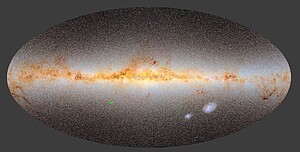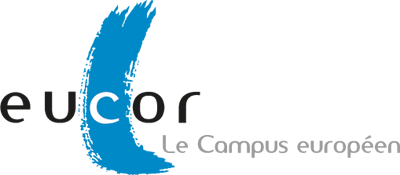Publication date: 19/06/18
ThemesNews
The scientific community of astronomy has been in full swing since Wednesday, 25 April, when the billions of data items collected by the Gaia satellite were made accessible to all by the European Space Agency (ESA). Available at the Strasbourg Astronomical Data Centre (CDS), this second Gaia catalogue unveils information on more than 1.7 billion stars.
Smiling from ear to ear, Olivier Bienaymé, astronomer and researcher at the Astronomical Observatory of Strasbourg, opened the doors of his office to us. The reason for his enthusiasm? The publication a few days ago of the second Gaia catalogue, named after the European satellite. The first catalogue, published on 14 September 2016, included the position and brightness of 1.1 billion stars, but distances and movements for only two million stars. Today, the information provided covers more than 1.7 billion stars. "An unprecedented step forward," says Olivier Bienaymé.
For this specialist in the study of the movement of stars, this new data will make it possible to measure the distances and the speed of seven million stars and their interactions in the Milky Way in an unprecedented way: "by observing the interactions, we can deduce the dark matter levels in the galaxy and the force fields that operate there. The detailed study of star currents and gravitational potential will also be facilitated by these discoveries, notably thanks to very precise graphical representations. "Their review already enables us to learn a lot about the history of our galaxy," says Olivier Bienaymé.
Assessing the size of our Milky Way
A hundred times more accurate than before, this new data will be used to improve the galaxy models previously created: "It is now possible to accurately assess the positions, distances and ages of stars by studying and comparing their brightness, and also their temperature through measurement of their colour.
This study of the positioning of the stars could make it possible to evaluate the size of our Milky Way and to better understand the characteristics of galaxies farther away. "We have work for at least the next twenty years, and this is just the beginning! ", concludes Olivier Bienaymé. That should keep them busy until the release of the next Gaia catalogue ...
Romain Hirt
450 scientists from 20 countries for billions of data items
450 scientists from 20 countries coordinated their efforts to process and make available the billions of raw data items collected by the Gaia satellite since September 2016 and published in this second catalogue. This astronomical amount of information, "of a quality never seen before" according to Olivier Bienayme, will be used by scientists from all over the world.
At the Strasbourg Observatory, the Astronomical Data Centre plays a central role in the dissemination of information transmitted by Gaia through a specific platform called VizieR. Open to all, it facilitates the cross matching of data from different catalogues while allowing a precise overview of the objects of study on the scale of the heavens. "Barely thirty hours after the publication of the catalogue, we had already received more than a million requests," says Olivier Bienaymé.
















